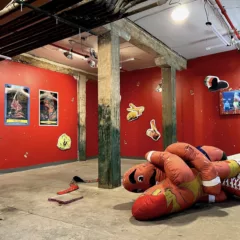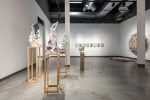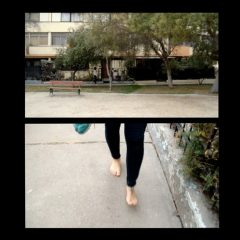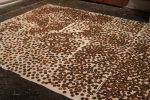—> Chip confronts the rules three artists use for making their art, in his review of Pool Rules at Fjord. –the Artblog editors——————————>
“No running!” “No diving!” How often have we been whistled at by lifeguards as adolescents wreaking havoc around our favorite watering holes? Rules and regulations at a place of fun and leisure are killjoys put there for legal and safety reasons. More interesting by far than pool rules, are the systems of rules and rituals that three local artists use to create their art. These rule-based artists’ systems are what the show Pool Rules dives into at FJORD.
Sean Gerstley, Natessa Amin, and Sarah Pater are the three rule-based art-makers whose work is on view. Each has a self-imposed set of guidelines or ideas that informs the process of making. As a much more entertaining alternative to the sets of rules that tell us what not to do, these artistic boundaries stoke creativity.
Art propelled by random words and phrases
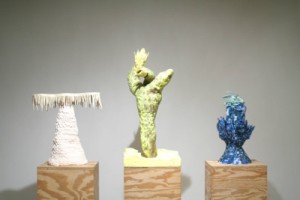
Sean Gerstley encountered a period in early 2012 in which he was not making things. During this time, he began compiling small pink cards on which he jotted down phrases or words that appealed to him in one way or another. Ultimately, as a way to get his hands back into clay and begin creating again, Gerstley used the cards as the impetus for a sculpture series in which he constructed a piece correlating to each card, retaining the original phrase as a title. “A Bunch of Lucky So-and-Sos” for example, includes a couple of stocky spires which might be better identified as a ‘pair’ than a bunch— three’s a crowd, after all. The phrase begs quite a few questions. Who is lucky and why? Why do they resemble pastel, pink and purple stalagmites?
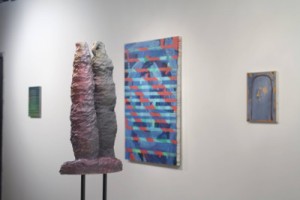
Instead of offering explanations, Gerstley delves even further into his production, splaying out more forms which exist only as testaments to his verbal explorations. “Marge Simpson,” for instance, looks much more like a sort of table with a white, fringed cloth, and bares little to no resemblance to the eponymous cartoon character. One of the most curious pairings of words would have to be “Buick Cloud,” whose blue form more resembles a Buick having plunged off of a bridge than one that is in the vapor.
Studio clothing as a significant factor
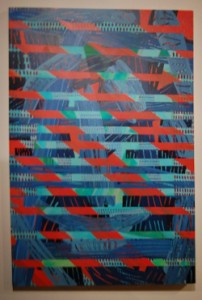
Natessa Amin’s painting process is closely tied to both her attitude and her attire. She says that when entering the studio, she typically selects an outfit which portrays a certain feeling, in hopes that it will somehow make its way into her artwork. From the looks of many of her paintings, one would assume that her clothing choices are quite heady: contrasting lines of color, overlapping shapes, and weaving patterns. It’s entirely possible, however, that these are merely the results of her internal workings – emotions, ponderings, etc. – and not lifted directly from her threads. Lately she has also been referencing her childhood drawings in an effort to derive shapes, colors, and context.
One standout is “Sweet Hypnotics,” whose alternating currents of blue and red send thick scarlet diagonals through a play of horizontal, watery textures. The raindrop–like shapes themselves are actually painted red, creating a harsh, inverse rain which seems more akin to a Slayer song than a waterfall.
Limiting size, colors, shapes and eschewing imagery
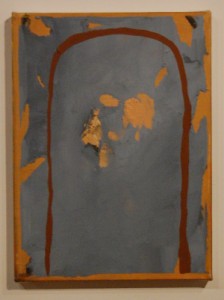
Sarah Pater embraces the slow, meditative qualities of painting and its lack of instant gratification. She limits the size, orientation, and color palette of her works and also excludes images and flourishes. As a result, her canvases are sometimes quite sparse, as in “What happens in the meadow at dusk?” This stony painting contains little more than splotches of sunset orange and a gray wash with an arched form centered vertically. It is reminiscent of a tombstone, although considering the intentional exclusion of representation by the artist, it almost certainly is not. Elsewhere, her canvases are slightly more complex, if only due to a plethora of solid-colored green lines.
Rule-based art begins with a problem (what should I make) and uses a recipe (a set of rules) to find the solution (the finished art). As in cooking, some recipes work better than others, and the work may be vexing because of the recipe and not the final result.
Pool Rules ended August 31 at FJORD Gallery, 2419 Frankford Ave., Philadelphia, PA 19125



